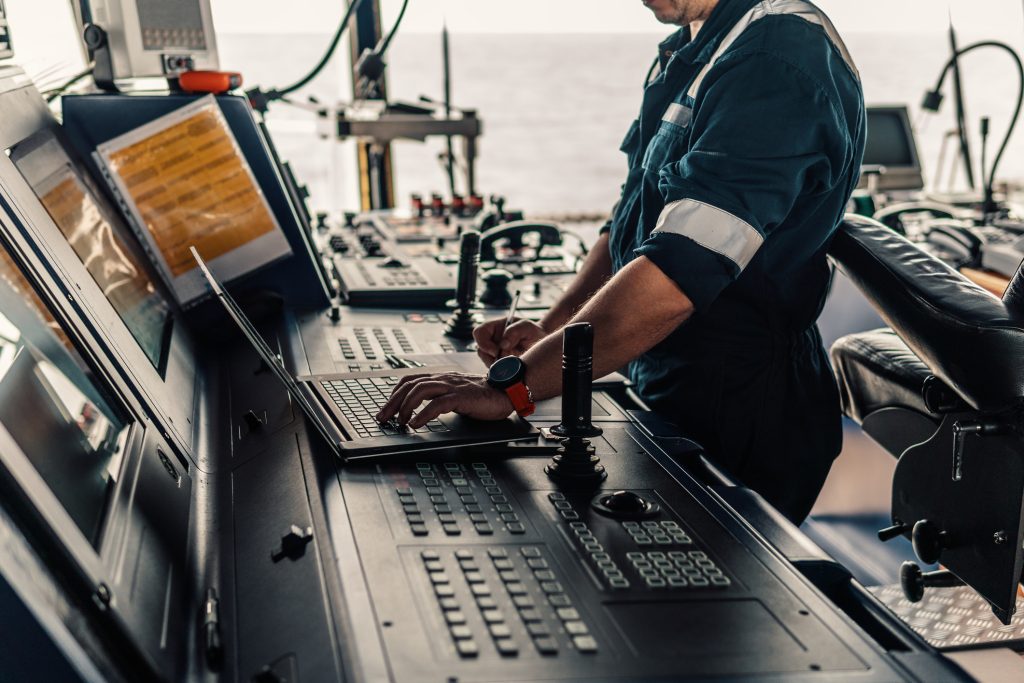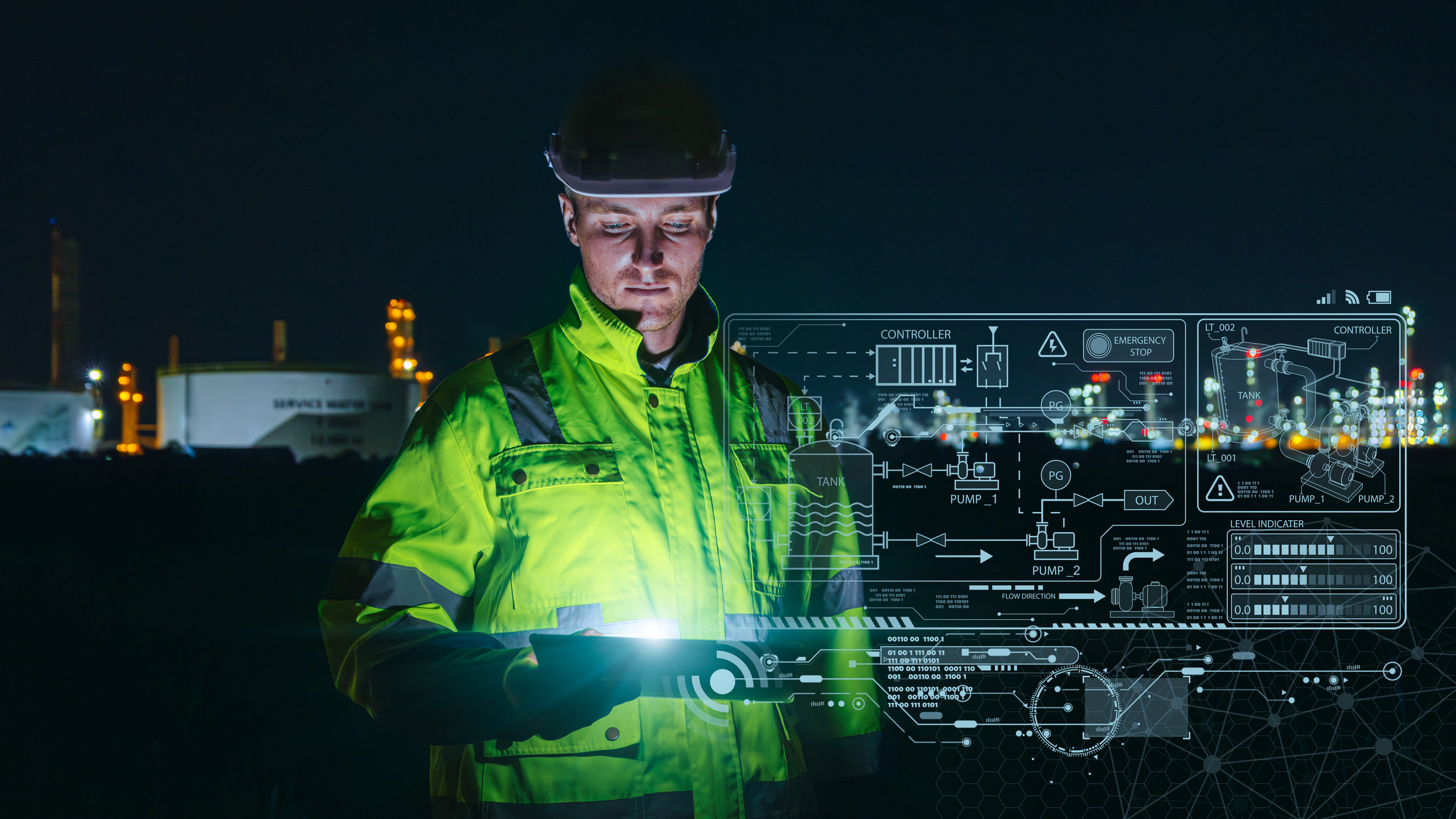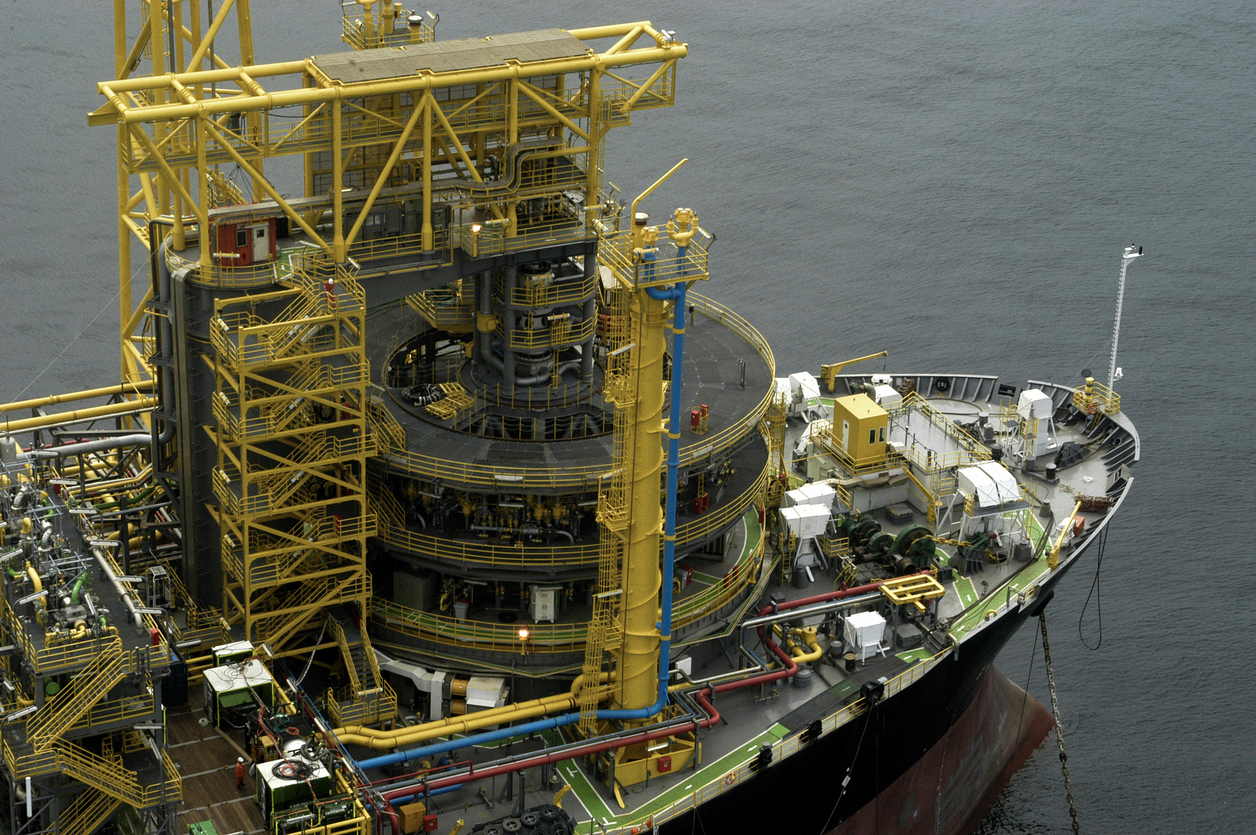The command bridge, usually located at the highest point of the ship's superstructure, is where important navigational decisions are made. There, the captain, officers, and, occasionally, the pilot work in synergy to ensure precise routes, avoid collisions, and respond to unexpected situations with agility and clarity.
In other words, it's where the ship gains direction, direction, and command. And precisely for this reason, it's one of the most strategic and sensitive areas for the safety of the entire operation, requiring the captain to be constantly alert to any unusual circumstances.
In this article, we will discuss the importance of the bridge for ship operations and how intelligent monitoring can help prevent accidents, bringing greater safety to the entire crew.
The role of the walkway and its operational complexity
The bridge isn't just a room with equipment. It houses radars, navigation systems, meteorological instruments, radio communications, and direct visibility of the route. Every detail counts: the layout of the controls, the crew alignment, the protocols in place.
This environment demands full attention from professionals, especially during moments such as docking, exit maneuvers, passing other vessels, or entering high-traffic areas. Focus and clarity during decision-making make all the difference.
With long shifts and intense operational demands, maintaining constant vigilance and coordination among bridge personnel is a daily challenge and also a critical success factor.
Risks on the command bridge: what can compromise safety
Although most crew members are highly qualified, the human factor is always an important variable to consider. Fatigue, momentary distractions, communication failures, diversion of attention to unrelated tasks (such as cell phone use), or a combination of these factors can compromise navigation safety.
In addition, the bridge may be subject to operational risks arising from external factors, often beyond the operator's control:
- Poor visibility in adverse weather conditions;
- Interference from other vessels or unexpected obstacles;
- Failures in navigation or communication equipment;
- Misalignment between professionals when making decisions.
All of these factors reinforce the importance of keeping this environment under constant surveillance, without turning it into an environment of pressure or excessive surveillance.
How monitoring can be an ally
Intelligent monitoring technology applied to the bridge should be understood as a complementary resource to the crew's expertise. Rather than monitoring or supervising individual behavior, the goal is to identify situations that put the operation at risk, generating early alerts so that safe and assertive decisions can be made in time. Thus, intelligent monitoring helps protect the integrity of the crew, operations, and resources employed.
For example, systems like ALTAVE's can detect the absence of operators at critical moments or the presence of significant visual distractions, such as the use of electronic devices outside of the operational context. This allows security teams and supervisors to act strategically, anticipating risky situations before they materialize.
More than observing, it's about acting to protect. Protecting lives, the ship, operations, and the company's reputation by adopting practices integrated into a safety culture.
When the walkway becomes a blind spot
It's common for some bridge operations to become automatic over time. Familiarity with the vessel, repeated routes, and the crew's technical mastery create a false sense of absolute control. However, this is precisely where the risk lies.
In critical locations like the bridge, the slightest distraction can lead to delayed responses, misreadings, or dangerous omissions. Therefore, it's essential to understand that the bridge cannot become an operational blind spot, where everything is assumed to be working properly based solely on history or confidence.
Many incidents investigated later reveal that there were previous signs of inattention, misalignment, or overload that went unnoticed. The presence of situational awareness support systems acts as an additional alert, without invading the commander's operational space, but rather complementing their vision with objective data.
Many incidents investigated later reveal that there were previous signs of inattention, misalignment, or overload that went unnoticed. The presence of situational awareness support systems acts as an additional alert, without invading the commander's operational space, but rather complementing their vision with objective data.
Benefits for the entire operational chain
Adopting technological solutions on the boardwalk, when done responsibly and aligned with onboard culture, generates benefits that extend throughout the entire operation:
- Greater predictability and prevention of human error: With real-time alerts and automatic event recording, you can act before small deviations become incidents;
- Useful technical evidence for training, reviews, and audits: Continuously captured recordings and data help understand behaviors, adjust procedures, and reinforce data-driven best practices;
- Transparency for shipowners and operators without compromising the authority of onboard professionals: Monitoring does not replace command; on the contrary, it reinforces it. It ensures that decisions are informed and that the operation follows expected standards;
- Improved organizational climate: When crew members understand that technology exists to protect them, engagement increases. The sense of support for safety strengthens trust between onboard and ground teams.
By focusing on prevention, safety, and support, rather than inspection, the bridge becomes an even stronger space, both from a technical and human perspective.
Safety as a culture
Bridge efficiency doesn't depend solely on the presence of technology. It's the result of good practices, ongoing training, and an environment of mutual trust between the captain, crew, and support staff.
By adopting smart tools that aid situational awareness, the company sends a clear message: we're focused on what matters. And what matters, above all, is ensuring that each journey is completed safely, responsibly, and with excellence.
Companies that view safety as a value, not an obligation, can go beyond compliance with regulations: they create a robust organizational culture that protects assets, people, and processes sustainably.
Conclusion
The bridge requires a solid combination of human expertise and technological support.
In an environment where every decision counts, having systems that help maintain attention, reduce distractions, and capture what truly matters can be the difference between a successful operation and a preventable incident. It's about raising safety standards to protect lives and resources.
When technology is used ethically, clearly, and purposefully, it doesn't threaten autonomy. On the contrary, technology combined with the human expertise of captains helps improve processes and enhance the safety of the entire crew, preserving the authority of professionals on board while expanding their ability to act safely.
About ALTAVE
ALTAVE offers intelligent monitoring solutions that increase safety in critical operations, protecting people, assets, and processes. By combining cutting-edge technology with automated analysis, it is possible to identify risk situations in real time and prevent accidents before they happen.
With real-time monitoring, intuitive dashboards and 24/7 support, ALTAVE contributes to operational safety and the protection of lives and essential resources. The company has patented technologies in Brazil and abroad, and is present around the world, serving sectors such as Defense and Security, Energy, Mining, Ports, Agribusiness and Oil and Gas.
Recognized for its strategic relevance, ALTAVE is accredited as a Strategic Defense Company by the Brazilian Ministry of Defense and a supplier to Petrobras.
Let's have a chat?
Contact us to learn more about how our solution can help your company!





